The global development of the economy contributes to an increase in energy consumption and the development of new oil and gas resources. Technological advances have made development possible in previously inaccessible locations due to weak infrastructure. The only requirement for equipment is that it can operate from solar panels, or from another kind of autonomous sources. The introduction of autonomous mining systems with minimal human intervention allows tools to be used with maximum efficiency without human downtime and accidents.
Despite this, the market situation cannot be called stable. The price changes rapidly almost every day. This leads to higher prices for fuel and more. Based on this, it is extremely important to control the flow and consumption of valuable resources. For these purposes, flow meters and meters of petroleum products are used.
Content
What is measured?

Flow meters are high-precision measuring instruments designed to control the inflow and consumption of oil products. Given the environment in which it is used, it must be durable, responsive to changes in a changing environment and provide the most accurate data.
The devices are used at almost every stage of mining:
- source development;
- shipping;
- post-processing.
In addition, commercial enterprises engaged in the sale of petroleum products cannot do without them.
How does it work?
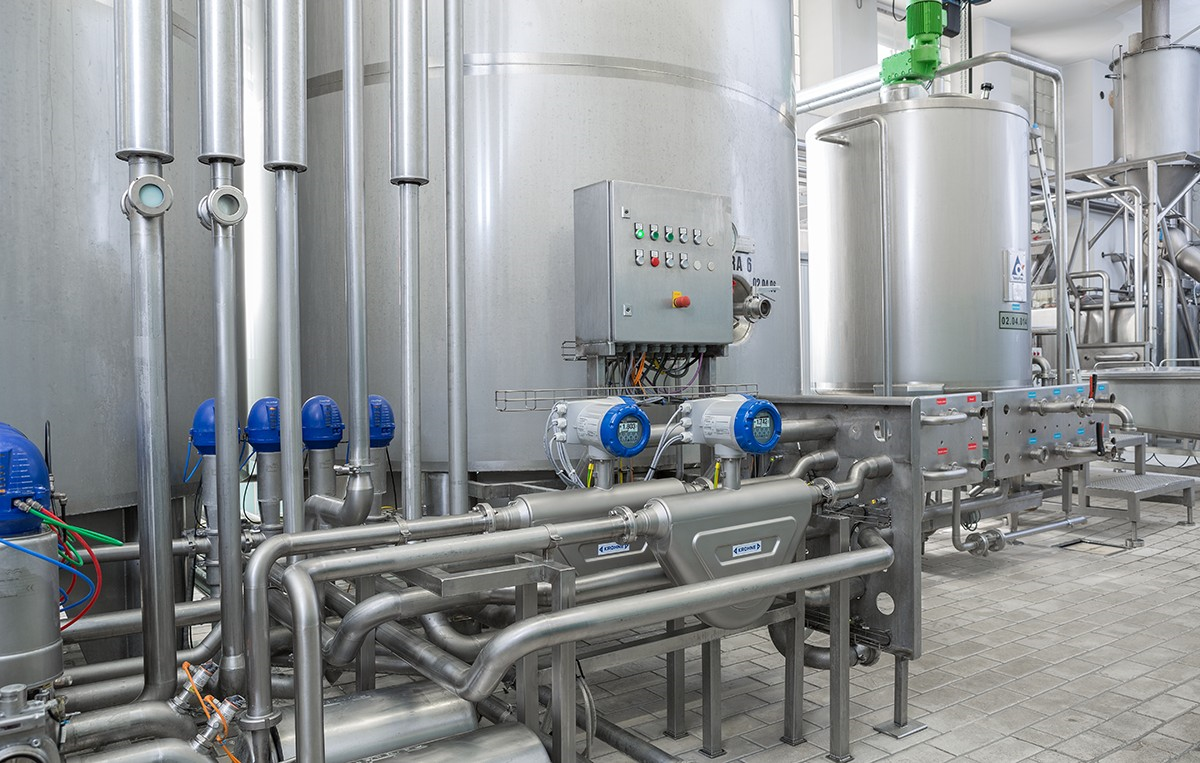
Determination of consumption of petroleum products and oils is based on physical laws and phenomena, due to which the required values are determined by measuring known dependent.
Each type of device uses different methods of determining values. There are such as the Coriolis effect, ultrasonic with an oval-gear mechanism with the participation of reed switches, and rotary ones. Electromagnetic devices are based on electromagnetic induction. In flowmeters, the float is influenced by gravity and fluids that are in balance. The float position indicates the flow rate.
What are they?
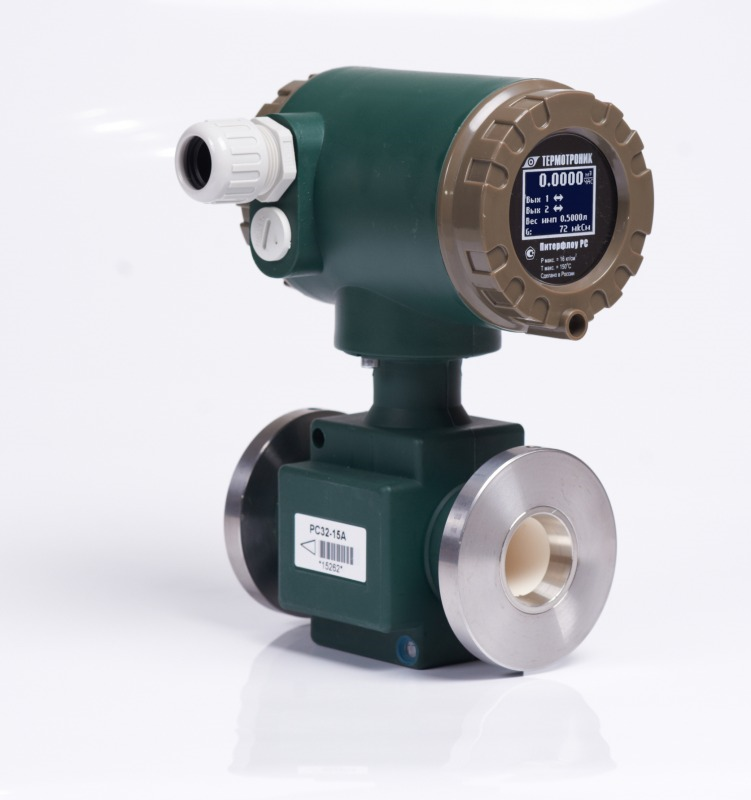
Electromagnetic flowmeters
They work according to Faraday's law, which states that an electrically conductive liquid moving in a magnetic field is induced in EMF in proportion to the speed of the liquid. The current moves perpendicular to the fluid in the conductor. The device detects the voltage between the two electrodes, and due to this, the volume of the liquid is determined. The method is characterized by a high degree of accuracy and reliability, while nothing impedes movement. Due to the absence of moving parts, the device will last for a long time.
Advantages:
- the indicators are not affected by density, pressure, temperature and viscosity;
- measurement of the volume of liquids with mechanical impurities is allowed;
- wide range of available nominal diameters;
- Free pipe cross-section allows CIP / SIP cleaning;
- there are no parts protruding into the pipe that can create a pressure loss;
- does not need additional maintenance;
- affordable price.
Disadvantages:
- magnetic and conductive precipitation affects the measurement results;
- uninformative signal;
- care must be taken to protect converters and communication lines from external sources of interference.
Ultrasonic flow meters
To obtain data, the differences in the travel time of the wave are measured. The design includes an ultrasonic wave transmitter. When the fluid moves through the pipeline, the wave is carried away. As a result, it takes different times for the signal to reach the transmitter. When moving upstream, more time is needed, but if the signal is moving parallel to the flow, the time is minimal.
All devices are microprocessor-based and have current and pulse signals at the output. Equipped with a digital display with an alarm circuit, indicators of the total consumption are saved with indication of emergency situations. They can measure the reverse flow rate.
Advantages:
- measurement error is no more than 2%;
- measurement of non-conductive and contaminated media, suspensions is allowed;
- installation on pipes of large diameter is possible;
- low inertia;
- without pressure loss;
- operating temperature range from -200 to +600 C;
- affordable price.
Disadvantages:
- Bubbles in the measured medium affect the accuracy of the readings;
- negative impact of vibrations;
- high susceptibility to flow distortions;
- surfaces reflecting and absorbing ultrasound and deposits negatively affect the results;
- requires a certain minimum flow rate.
Differential pressure flow meters
When a liquid or gas moves through a nozzle or other kind of restricting device, pressure drops occur. At this point, the flow changes speed and pressure increases. The purpose of the flow meter is to measure it.
After changing the cross-sectional area, the substance must again fill the formed voids. In other words, return to the starting position.
When choosing a variable pressure flow meter, it is important to pay attention to the flow coefficient. Its task is to take into account the uneven movement of the flow section caused by friction against the pipeline walls and the viscosity of the medium. As a narrowing device, use:
- pitot tube;
- Venturi tube;
- flow nozzles;
- diaphragm.
Advantages:
- no moving parts.
Disadvantages:
- high sensitivity to various kinds of precipitation at the constriction;
- the presence of mechanical obstacles in the section (washer, nozzle);
- small measuring range.
Vortex
The principle of operation is the Karman effect (Karman vortex street). To calculate the flow rate, the frequency of pressure fluctuations is determined. They appear at the origin of vortices, or oscillation of the jet, due to bypassing an obstacle of a certain shape.
The measured substance, when bypassing the obstacle, changes the direction of the flowing flows and increases the speed, reducing the pressure. After going around the obstacle, the fluid in the medium slows down and the pressure increases. The front of the streamlined object is under constant high pressure, and the rear is low. The extreme layer of the flow, under the influence of the pressure difference, is detached from the body and, changing the motion vector, forms vortices. They are formed on both sides of the object.
Advantages:
- solid monolithic object;
- stable readings;
- ease of use;
- high level of accuracy;
- pollution does not affect work.
Disadvantages:
- increased sensitivity to vibrations;
- the minimum pipe diameter on which the flow meter can be installed is 150 mm, the maximum diameter is 300 mm;
- a certain flow rate is required for performance.
Tachometric
A small rotating element is installed in the pipe. Its speed is proportional to the volume flow. Determining the number of perfect revolutions of a turbine or impeller, the required value is identified. This is possible thanks to special electrical tachometric converters.They slow down the rotating element, because of this, their accuracy is higher than that of meters with a mechanical gear.
Advantages:
- do not require food;
- reasonable cost.
Disadvantages:
- short service life of the rotating element;
- impurities and foreign objects negatively affect the accuracy of the readings;
- a small degree of reliability;
- inconsistency of data.
Coriolis
When vibrations perpendicular to the direction of the flow are applied to the moving force, the Coriolis force appears, it is proportional to the mass flow. Based on this principle, this type of device has been developed.
For this, vibrating tubes are used.
At the entrance and exit to a specially prepared section, there are sensors that indicate the geometric phase shift of the tubes. The processor calculates the consumption based on the received data. The vibration frequency of the measuring tubes is caused by measuring the density of the medium. In addition, temperature readings are recorded in them, for further determination and compensation of its effect.
Advantages:
- precipitation does not affect the data obtained;
- calculation of mass flow;
- there are no obstacles in the inner section;
- the electrical conductivity of the liquid does not affect the measurement results.
Disadvantages:
- vibrations affect accuracy;
- strict observance of the instructions during manufacture;
- high price.
How to choose?
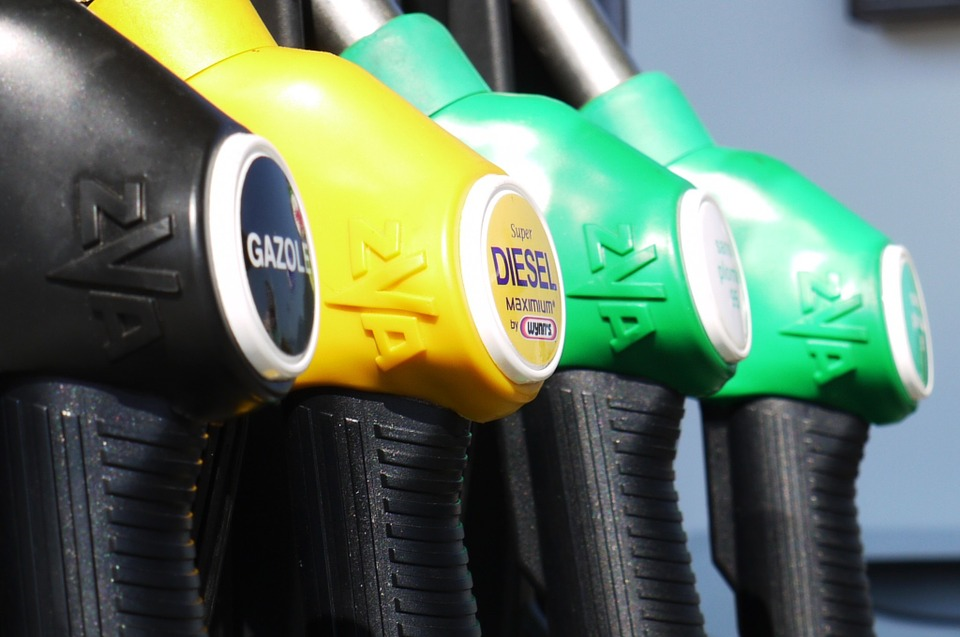
The flowmeter is easy to operate, able to serve for a long time and guarantee the accuracy of readings. Its robust housing withstands the negative influences of the medium being measured and protects the internal components from premature wear. In order for it to strictly monitor the flow rate and changes in characteristics, it is necessary to choose the right flowmeter by determining:
- acceptable operating conditions;
- design features of the model;
- limits of possible error;
- minimum and maximum consumption of oil products;
- possible maximum overpressure;
- temperature of the medium and its viscosity;
- weight;
- device class;
- type of installation (minimum and maximum possible diameter, placement of holes for piping, etc.).
The best industrial meters and flow meters for petroleum products for 2020
FM-I-80
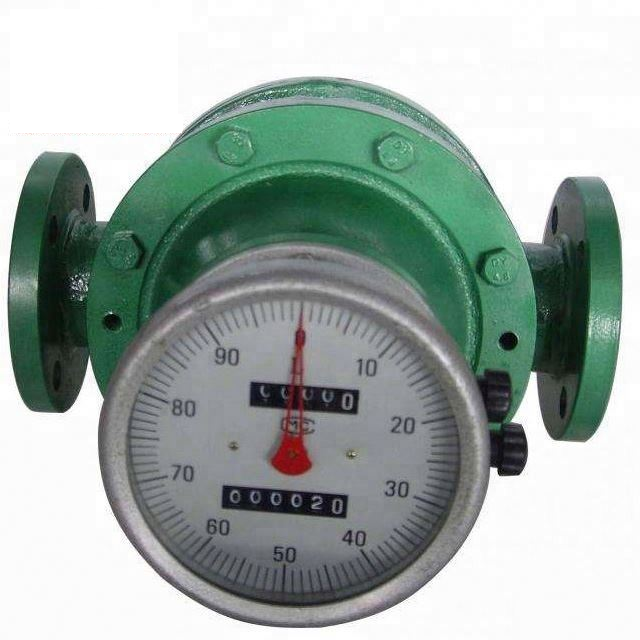
The FM-I-80 series industrial petroleum liquid flowmeter is designed to accurately measure the flow rate of liquids such as gasoline, oil, diesel, oil and other similar liquids. It only works with non-aggressive media. To ensure normal operation, a filter must be installed in front of it, its fineness must be at least 0.1 mm.
Advantages:
- flange connection;
- mechanism with oval gears;
- maximum pressure 16 atmospheres;
- steel flow path;
- accuracy + - 0.5%;
- work in the range from - 40 to + 60C;
- the ability to reset one-time accounting;
- data on the total consumption is displayed on a five-digit display and is not reset
Disadvantages:
- high price.
Krohne OPTISONIC 7300
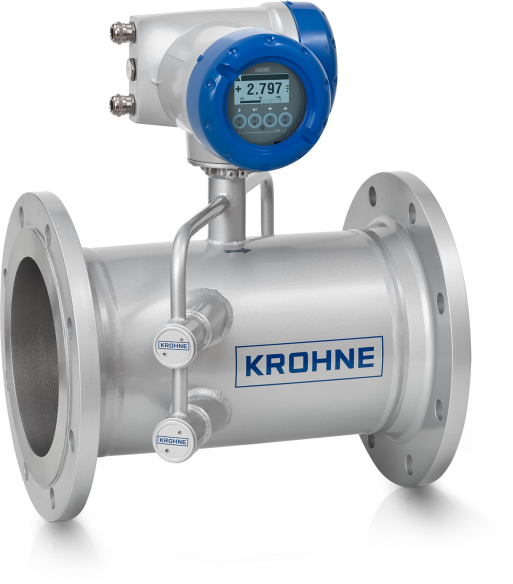
The new model from the world leader in the sale of high-precision equipment has acquired a high-strength housing that does not have protruding and moving parts. It belongs to the line of ultrasonic devices.
In comparison with similar models from other companies, it does not need regular calibration, a one-time factory calibration is enough.
The flowmeter sensors are made of corrosion-resistant materials; cold-resistant steel grades are selected for the body. This allows you to use the device in the most difficult conditions without fear that it will become unusable.
Advantages:
- the introduction of new technologies made it possible to use in previously inaccessible places, as interference was created;
- no pressure loss;
- do not need additional maintenance;
- error 1%;
- calculation of flow rate based on readings from a pressure and temperature sensor;
- special design eliminates the accumulation of liquid between the sensor and the wall;
- damping eliminates the possibility of signal short circuits.
Disadvantages:
- the maximum pressure is 150 bar.
OGM-50
A mechanical meter is used to detect the consumption of gasoline, diesel fuel and other substances. The housing is made of aluminum and can withstand the harmful effects of the medium being measured.
Thanks to oval gears, the device has high accuracy rates.
Advantages:
- two digital displays, for indicating a one-time consumption and zeroing, the second displays data on the total consumption and allows you to delete it;
- wide range of measurements;
- permissible temperatures from - 25 to +80 С;
- light weight.
Disadvantages:
- viscosity from 1 to 1000 mPa.
Mechanical flow meters
PIUSI K33 METER VER.D ATEX F0057003A
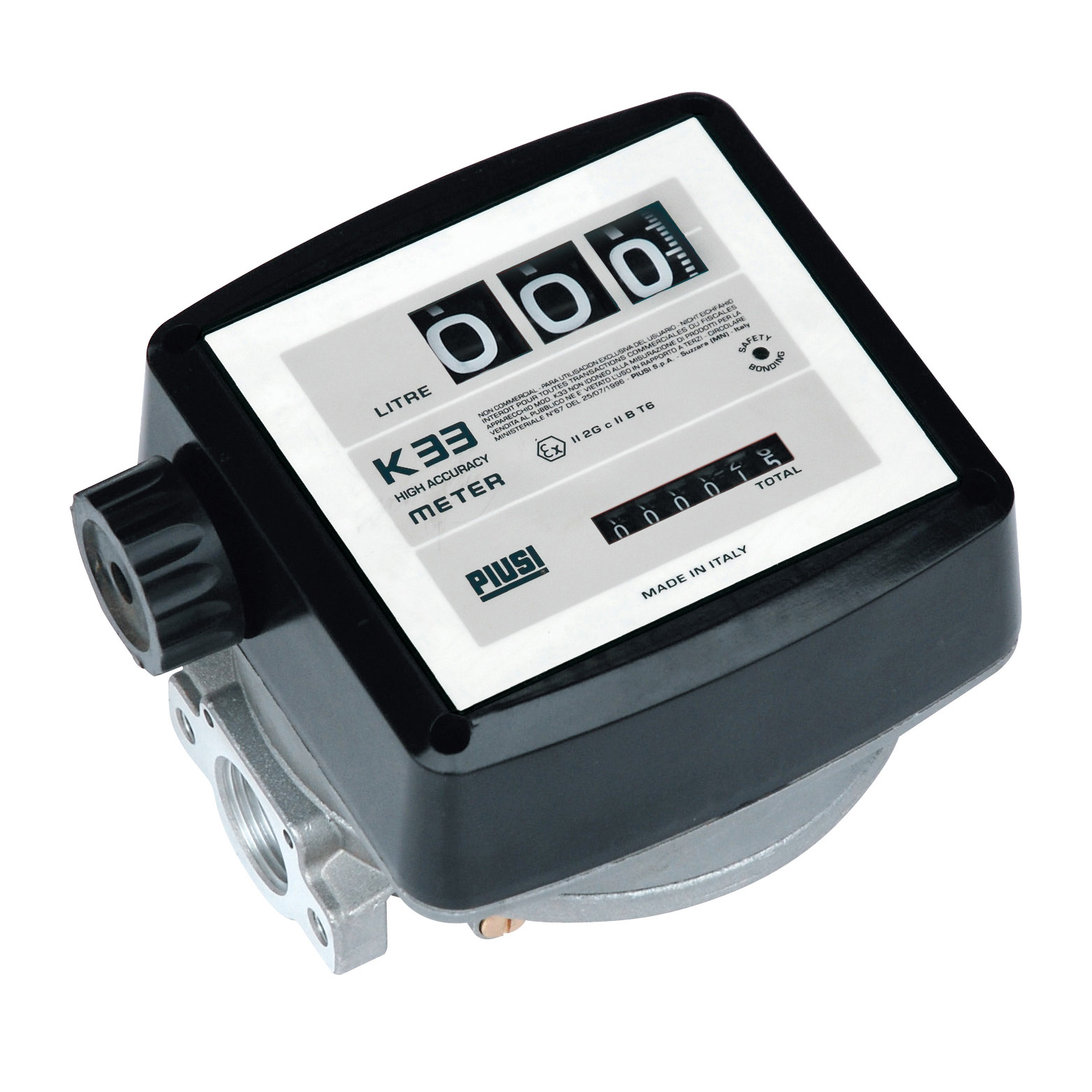
The mechanical grade device is intended for individual use to determine the amount of gasoline, kerosene and other liquid consumed. Product of the Italian company PIUSI. It is easy to operate and self-calibrate. For the manufacture of the case, a special material resistant to an aggressive environment was used. Suitable for flexible and rigid pipes as well as pumps and tanks. The hose outlet is located on the left.
Advantages:
- error 1%;
- allowable pressure 3.5 bar;
- minimum flow rate 20 l / min;
- two scales;
- a screw for calibration reduces the percentage of error;
- threaded 25 mm connections for connection to the pump and hoses;
- flange connection is allowed.
Disadvantages:
- high error rates.
Gespasa MG 80
A universal mechanical device designed for metering diesel fuel. In the manufacture of the case, shock-resistant plastic was used. This eliminates the risk of damage due to minor mechanical stress.
There are two scales on board the meter: to display the total flow rate and the result of the last measurements.
Advantages:
- coarse filter;
- operation at temperatures from -10 to +60 degrees C;
- 5 connectors for connecting hoses;
- maximum flow rate 90 liters;
- maximum pressure 3.5 bar.
Disadvantages:
- not intended for commercial use.
BELAVTOKOMPLEKT TANK. 12016
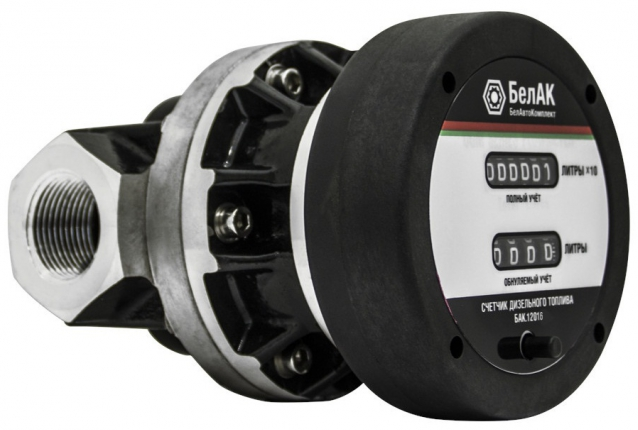
Versatile flowmeter for accurate determination when pumping liquids. Suitable for all fuels. The possibility of using the device for commercial purposes is allowed. For its high accuracy, it is classified as a professional class; in order to achieve maximum results, it is recommended to use BelAK in a set with fuel equipment.
The measurements are carried out thanks to the rotor mechanism. It consists of two gears inside an ellipse. They turn around when passing through a special chamber of a certain volume. This takes into account the volume, despite the density and viscosity.
Advantages:
- error level 0.5%;
- withstand up to 9 million liters;
- works at a temperature of +70 degrees C;
- the rotors are made of high strength steel.
Disadvantages:
- high price.
Ultrasonic meters for petroleum products
Sentinel LCT4
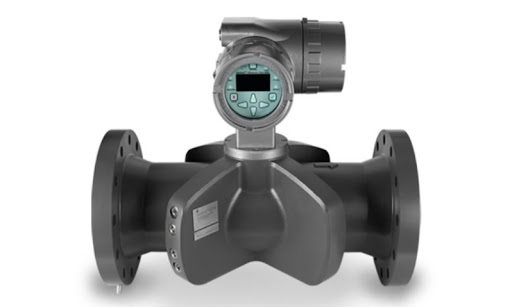
GE Panametrics has released a new model for its line of ultrasonic flow control devices for crude oil and its products. The device has passed OIML R117-1 and Chapter 5.8 certification. API MPMS.
The new model received a case with graceful lines made of shock-resistant materials. She was deprived of a buffer and distribution columns.
The use of completely new calculation algorithms minimizes the effect of fluid viscosity on measurement results. Changing it now does not require additional calibration and other settings.
Advantages:
- the minimum level of error is 0.15%;
- monolithic welded structure without moving elements;
- there are no filters and solutions;
- pressure does not drop;
- One factory calibration is enough for use;
- there is no pipe limitation.
Disadvantages:
- highly specialized model requiring a water supply of at least 80 mm.
Daniel 3814
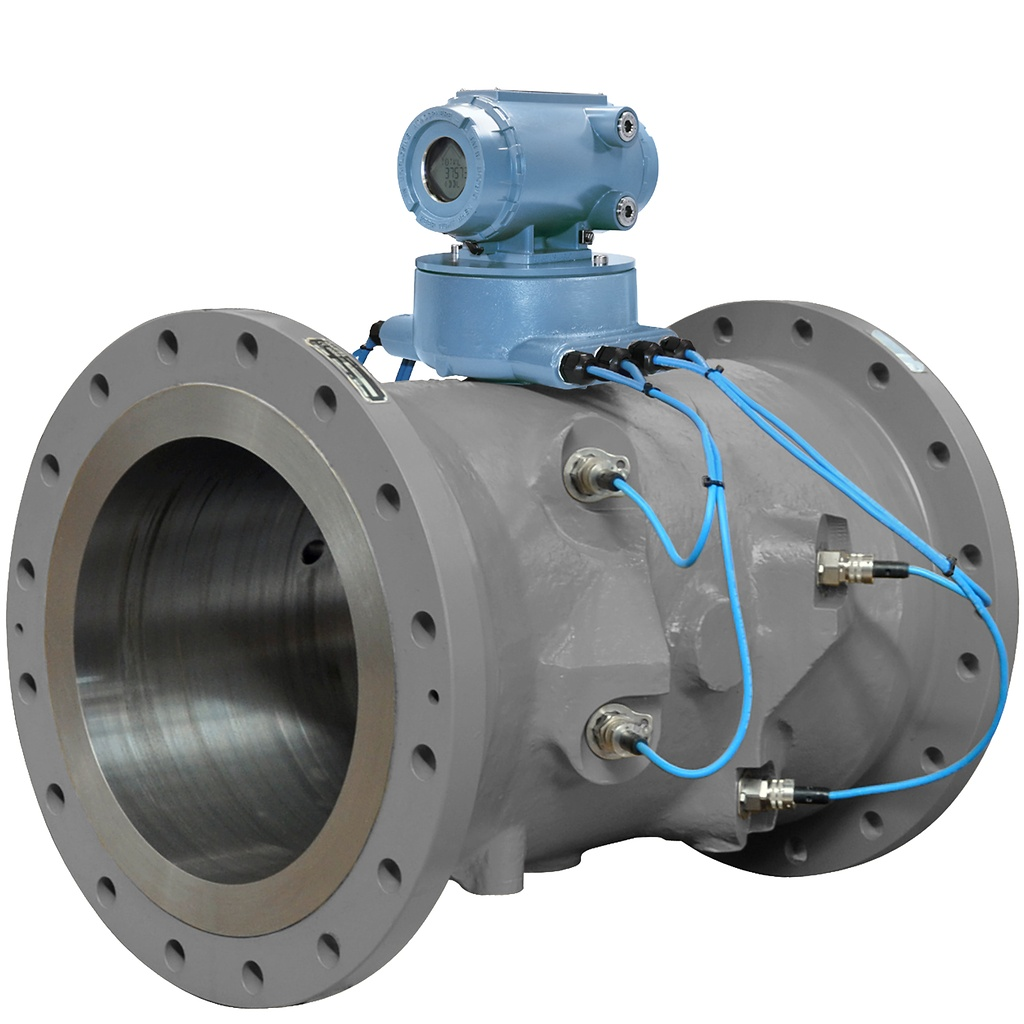
Highly accurate measurement certified, API Chapter 5.8 and OIML R117 put it on par with the best in its class. The full bore design minimizes pressure drops.The Daniel 3810 electronic unit allows you to quickly identify and correct the problem.
Advantages:
- error 0.27%;
- one-time calibration of equipment in specialized laboratories of Emerson;
- stainless and carbon steel were used in the manufacture.
Disadvantages:
- low maximum flow rate.
GE Sensing AT868
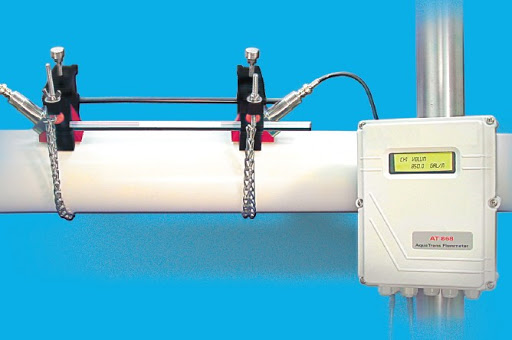
A striking representative of its class, which has absorbed the best practices of its predecessors and competitors. The meter is a robust design with no moving parts and requires no regular maintenance to keep it running smoothly. Built-in processors support calculation according to original coding technologies. Specialized software adapts to dynamically changing environment.
Dignity:
- overhead converters create conditions for flexible and convenient oil flow control;
- durable shock-resistant construction;
- the costs of installation and maintenance of equipment are reduced in comparison with analogues;
- takes measurements in almost any environment.
Disadvantages:
- does not remember statistics on accumulated consumption. Internal memory is missing. To eliminate the disadvantage, it is necessary to purchase additional equipment.
The market for instruments for accurate measurement of oil today offers the buyer a wide range of products that can satisfy almost all the needs of potential customers. To make a purchase, it is enough to contact a specialized online store, qualified specialists will help solve the problems that have arisen. The presented top includes the best representatives in their class.












